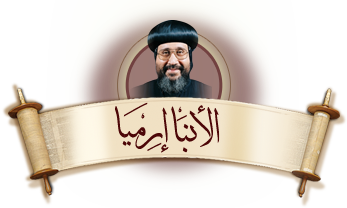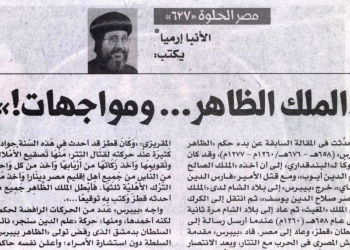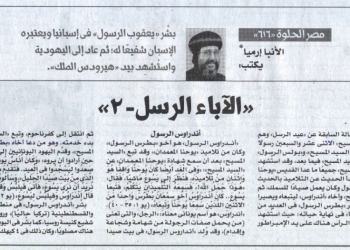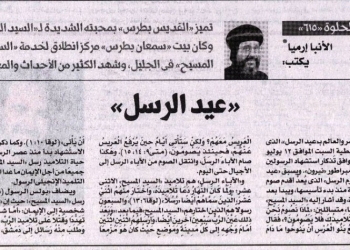A previous article talked about Pope Makarah II (the 69thpatriarch of Alexandria), who was a contemporary of Al-Amer bi Ahkam Allah, during whose days, a number of things took place, including: some natural phenomena that made people think that the Resurrection had come, and a great earthquake struck the Church of Michael on the island of Rawda, the seat of the Patriarchate at the time, the Franks campaign arrived atFarama, and Minister Al-Afdal bin Badr Al-Jamali was killed. Pope Makarah II departed in 1128, leaving the See of Saint Mark vacant for about two years.
As for the Abbasid State at the time, we have previously spoken about Caliph Al-MustazhirBillahwho ruled for over two decades, pervaded with much incidents and turmoil: In the east, there were struggles among the princes and sultans of the Seljuk state, while in the west, wars against the Franks took place, filling the days of Al-MustazhirBillah with turmoil and struggles, who was succeeded by his son, Al-MustarshidBillah.
The Abbasid Caliph Al-MustarshidBillah (512- 529 AH) (1118- 1135 AD)
Abu-Mansour Al-Fadl, the son of Al-MustazhirBillah, the 29th Caliph of the Abbasid State. He was taught by Sheikh Abu Al-Barakat Ahmed bin Abdul-Wahab Al-Sibi, he was famous for his beautiful handwriting, eloquent verses, well composed Arabic poetry and intelligence. In 512 AH (1118 AD), his father, Caliph Al-MustazhirBillahdied after entrusting him with the caliphate, his brothers and relatives and the senior statesmen all pledged allegiance to him.
During the days of Al-Mustarshid, struggles among the Seljuk State men was still at its peak, as Sanjar bin Malk-shah fought against his nephew, Mahmoud, until Sanjar assumed the rule of Iraq. The Abbasid Caliph Al-MustarshidBillah attempted to make use of these conflicts to restore the Abbasid authority again; he organized a big army to defend the Abbasids. Mr. Hassan Khalifa says in this: “He diligently worked, and chastened the rebels and disobedient by himself, overcame the greatest rebels of Iraq thanks to his courage and bravery… Once his power was strengthened, he worked on getting rid of the Seljuks”
Maneuvers were conducted between the Abbasids led by Caliph Al-MustarshidBillah, and the Seljuks led by Sultan Mahmoud, that ended with reconciliation. In 525 AH (1131 AD), Sultan Mahmoud died and was succeeded by Sultan Massoud bin Muhammad bin Malk-shah, who had conflicts and wars with the former leader Sanjar, all ended in Sanjar’s defeat. Amidst such conflicts among the Seljuks, Al-MustarshidBillah restored his power and authority, but finally, things did not go well with Sultan Massoud, so they fought against each other, but Caliph Al-MustarshidBillah was defeated, it is said: “He went out to fight Massoud, but he was defeated, captured by Massoud and kept in his tent under someone’s eyes, and presented him all the service needed, but he was killed inside the tent. It is said that a member of Al-Batiniyyah (who believe in hidden meanings of the law) attacked and killed him at night.” This happened in 529 AH (1135 AD), he was succeeded by his son Al-Rashid Billah.
Caliph Al-Rashid Billah (529- 530 AH) (1135- 1136 AD)
Abu-Jaafar Al Mansour, the son of Al-MustarshidBillah, he was called Al-Rashid Billah, he is the 30th Caliph of the Abbasid State. He assumed caliphate succeeding his murdered father, trying to avenge him, so he agreed with a number of princes to remove Massoud from power, but the latter Seljuk Sultan proceeded to Baghdad and put it under siege until he managed to enter it, Caliph Al-Rashid fled to Mosul after his friends abandoned him. Massoud gathered the judges, witnesses and jurists to tell them about the oath Al-Rashid made to him, so they judged to remove him from caliphate. Sultan Massoud chose Al-Rashid’s uncle to replace him, and… stories about beautiful Egypt never end!
The General Bishop
Head of the Coptic Orthodox Cultural Center


 العربية
العربية











